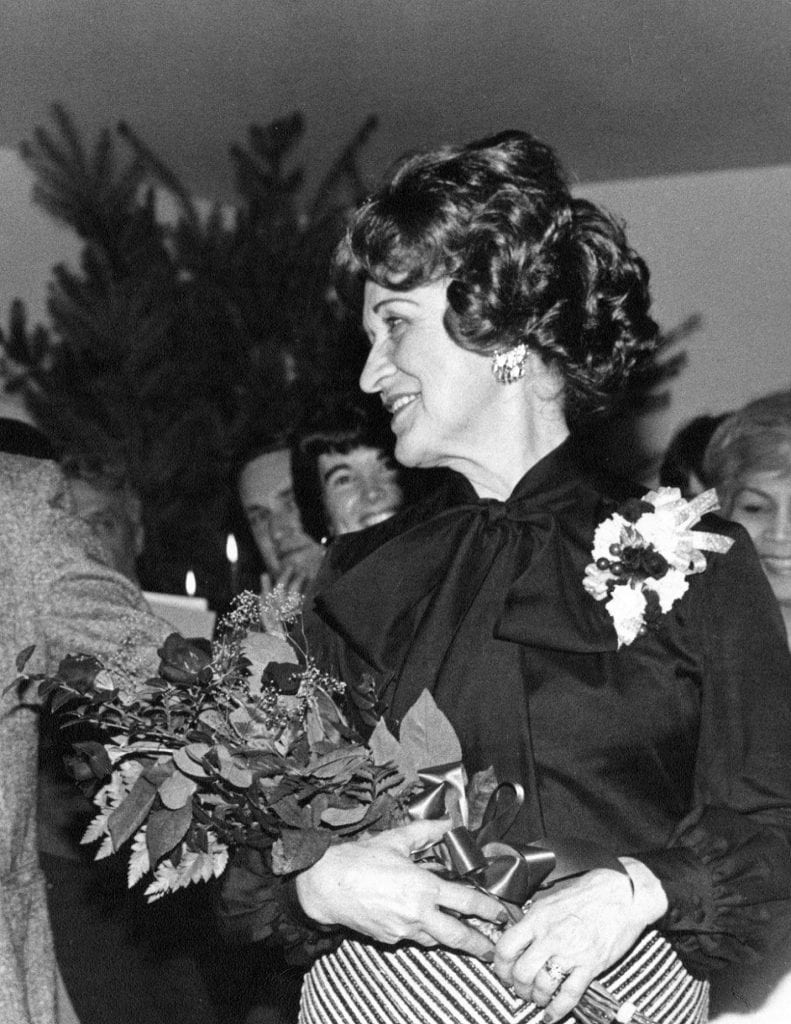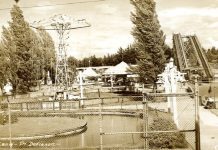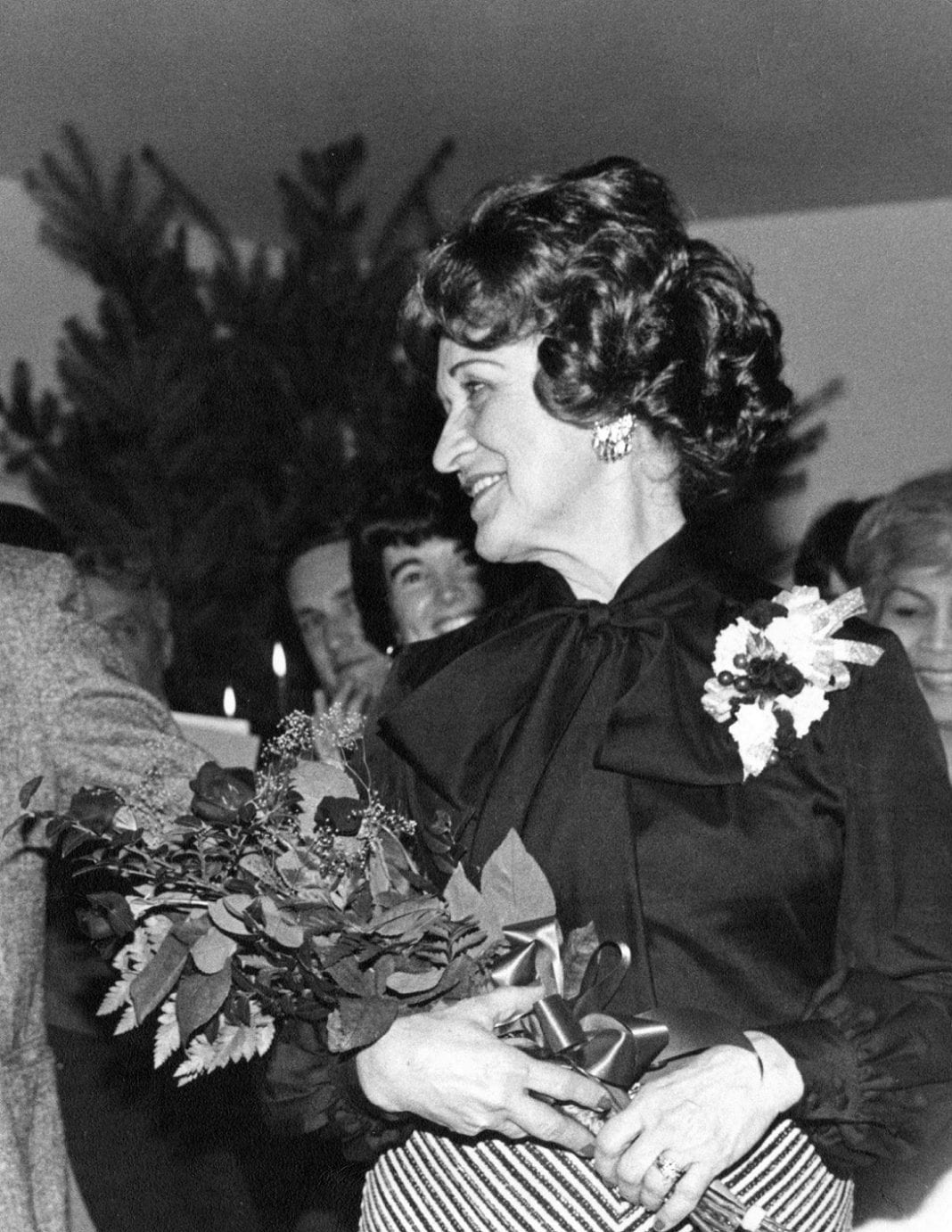Some people called her the “Iron Lady of DuPont” after Margaret Thatcher, prime minister of Great Britain, but all agreed she was a determined, active leader. Pola Andre was mayor of DuPont in the 1980s, during the community’s transition between a dynamite manufacturing town to the city that it is today.
Apolonia Antoinette (who went by the nickname “Pola”) was born in Chicago to Anthony and Marianna “Mary” Prawdzik Olezchak on April 18, 1916. Both her parents immigrated from Augustow, Poland in 1907. They married in Chicago in 1915. In 1917 Pola was joined by a brother, Mieczyslaw (who went by “Mitchell” or “Miechie”). The 1930 federal census saw Pola’s widowed mother working as a seamstress at a tailor shop.
Being so close in age with her brother, Pola and Mitchell were in the same grade. They both graduated from the Lindblom Technical High School (now the Lindblom Math and Science Academy) in Chicago in 1933. The yearbook listed Pola as a member of the Girls’ Athletic Association, Tap Dancing Club, Senior Girls Club, Honor Society, Honor Posture Team and Tennis Club.
Pola earned a master’s degree in music from Eggert Music Academy in Chicago. She was an excellent pianist and organist. Having a great love for education, she taught piano lessons for over sixty years, including during her tenure as mayor of DuPont.

In 1942 Pola married an army soldier, Stanley Andre (born 1913) in Chicago. The couple had four children: Bob, Rick, Charmaine and Marilyn. Stanley’s army career moved the Andres around the world, including Austria and Germany, before finally ending up at Fort Lewis (now Joint Base Lewis-McChord) as a lieutenant colonel. After Stanley’s untimely death in 1964, Pola and her young children moved to DuPont.
Pola Andre quickly became active in DuPont civic life. She was a member of the school board and served five years on the city council. Pola was also the town’s clerk-treasurer for ten years. In 1979 she was elected mayor as a write-in candidate, winning by a surprising 56% of the vote.
Pola Andre was mayor of DuPont from 1980 through 1989. The community was struggling to adjust after the DuPont Company (which had built the town and been its major employer) closed its dynamite plant in 1976, due to international market conditions. The Weyerhaeuser Company bought the 3,200-acre property for 12 million dollars.
An active mayor, Pola Andre often toured the town each day, to interact with residents and investigate problems and concerns. She claimed to know all 564 residents of her city. Pola’s nickname the “Iron Lady” was very evident in her resolve to work to revitalize DuPont and improve its quality of life. In 1981 she created the Mayoral Task Force for Neighborhood Revitalization, surveying citizens for ideas on how to improve the town to create a community development plan. One result of this project was the opening of the city’s first official park at Sellers Park located at 600 Barksdale Ave. Now also called the DuPont Village Park, it has a playground, basketball court and large open field.

Also, Pola secured a Housing and Urban Development (HUD) grant through Pierce County Community Development to bury overhead utility lines, repave roads and add new curbs and sidewalks. The city dedicated these improvements on October 28, 1983.
Moreover, Pola Andre led negotiations with Weyerhaeuser Corporation on the use of the former DuPont Company land. Many ideas for the property were debated over the period, from a wood products export facility to a timber themed amusement park. Due to environmental concerns and market conditions, Weyerhaeuser eventually shifted its focus to land development. This new project led to the creation of Northwest Landing, a commercial, industrial and residential development that reshaped the community of DuPont from a small village into a modern city. In 1989 the DuPont City Council approved this ambitious plan.
Construction took a long time, with much remediation work done by the Washington State Department of Ecology to clean up decades of toxic waste from the dynamite plant. The new project transformed the community as the population grew from 592 in 1990 to 8,199 in 2010 according to the U. S. Census. The majority of people living in DuPont today are active duty or retired military and their families.

With all this change, Pola Andre did not forget to help preserve the town’s unique heritage and character. She created the Memorandum of Understanding defining the working relationship between the city and DuPont Historical Society to run the DuPont Historical Museum at 207 Barksdale Ave.
Pola Andre died in Long Beach, California on March 22, 2011, at age 95 and was buried in the Calvary Cemetery in Lakewood, Washington beside her husband. Her legacy in DuPont continues today. Pola Andre Park (1895 Ridge View Drive) was dedicated in 2016. Robinson Park (205 Barksdale Avenue), next to the DuPont Historical Museum and historic dynamite train, has a Pola Andre gazebo which was dedicated in 1995 through the combined efforts of Northwest Landing and several other companies, fulfilling her mayoral dream to have a gazebo in the Village’s center.








































